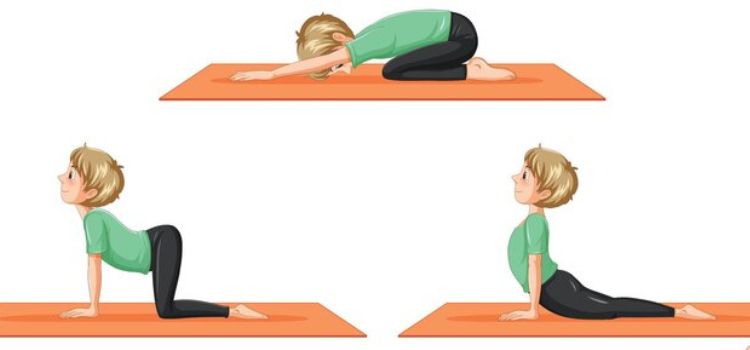In the domain of actual wellness and prosperity, extending frequently takes a secondary lounge to additional unique exercises like cardio or strength preparing. Nonetheless, adjusted extending assumes a significant part in upgrading adaptability and forestalling wounds. Whether you’re a competitor, an end of the week fighter, or somebody basically hoping to keep a sound way of life, consolidating a balanced extending routine can yield huge advantages. This extensive article dives into the science behind extending, its consequences for adaptability and injury counteraction, and gives down to earth tips to making a powerful extending routine.

Introduction about Stretching on Flexibility
Extending is a frequently ignored part of wellness that assumes an imperative part in keeping up with and further developing adaptability, scope of movement, and by and large actual execution. All the more significantly, customary extending is fundamental for injury anticipation, guaranteeing that muscles and joints stay solid and strong. In this article, we’ll investigate the different parts of extending, including various strategies, the physiological advantages, and how to integrate extending into your wellness routine for most extreme advantage actually.
Figuring out Adaptability
What is Adaptability?
Adaptability is the capacity of a joint or series of joints to travel through an unhindered, torment unfenced of movement. It is impacted by the length and flexibility of the muscles, ligaments, and tendons encompassing the joints. Great adaptability considers more liquid and proficient developments and decreases the gamble of wounds.
Factors Influencing Adaptability
A few variables can influence a singular’s adaptability, including:
• Age: Adaptability will in general diminish with age because of the regular hardening of tissues and decreased actual work.
• Orientation: Ladies by and large have more prominent adaptability than men, especially in the hips and lower back.
• Hereditary qualities: Hereditary inclinations can impact a singular’s regular adaptability.
• Action Level: Customary actual work, particularly exercises that include extending, can keep up with or further develop adaptability.
• Muscle Temperature: Warm muscles are more malleable, which is the reason heating up prior to extending is fundamental.
Sorts of Extending
Static Extending
Static extending includes standing firm on a stretch in an open to footing for a while, normally between 15 to 60 seconds. This kind of extending is best after practice as a component of the cool-down daily schedule. It extends muscles, further develop adaptability, and improve unwinding.
Dynamic Extending
Dynamic extending includes moving pieces of your body through a full scope of movement while steadily expanding the range, speed, or both. These stretches are typically performed before exercise to set up the muscles for action. Models incorporate leg swings, arm circles, and strolling rushes.
PNF Extending
Proprioceptive Neuromuscular Assistance (PNF) extending is a high-level type of adaptability preparing that includes both extending and getting the muscle bunch being designated. This technique is profoundly compelling in expanding adaptability and is many times utilized in recovery settings. It normally includes an accomplice who gives obstruction.
The Science Behind Extending
Physiological Impacts of Extending
Extending influences the body in more ways than one:
• Expanded Blood Stream: Extending increments blood stream to the muscles, which conveys oxygen and supplements while eliminating metabolic waste.
• Further developed Muscle Coordination: Customary extending works on neuromuscular coordination, which upgrades by and large development proficiency.
• Improved Scope of Movement: Extending stretches the muscles and ligaments, permitting joints to move all the more openly.
Stretch Reflex and Muscle Shafts
The stretch reflex is a muscle constriction because of extending inside the muscle. It is a defensive component to forestall overextending and injury. Muscle axles are tangible receptors inside the muscle that recognize changes in muscle length and speed of stretch. Understanding the stretch reflex and muscle shafts is critical for performing extends accurately and securely.
Advantages of Customary Extending
Customary extending offers various advantages, including:
• Expanded Adaptability: Normal extending keeps up with and work on the scope of movement of the joints.
• Decreased Muscle Pressure: Extending eases muscle snugness and strain.
• Further developed Stance: Extending the muscles of the lower back, shoulders, and chest can assist with keeping the spine in better arrangement and further develop act.
• Improved Unwinding: Extending significantly affects the psyche and body, assisting with lessening pressure and advance unwinding.
Making a Fair Extending Schedule
Warm-Up and Chill Off
Prior to extending, it is vital to heat up the muscles to increment blood stream and make them more malleable. A light cardio movement, for example, energetic strolling or running for 5-10 minutes is successful. Additionally, integrating extending into your cool-down routine diminishes muscle irritation and helps in recuperation.
Target Regions
A decent extending routine ought to focus on all significant muscle gatherings, including:
• Neck and Shoulders: To reduce pressure and further develop act.
• Arms and Wrists: Especially significant for the people who work at a PC.
• Back and Center: To help the spine and work on in general versatility.
• Legs and Hips: To upgrade lower body adaptability and decrease the gamble of wounds.
Recurrence and Span
For ideal outcomes, integrate extending into your daily practice something like 3-4 times each week. Hold each stretch for 15-60 seconds and perform 2-4 reiterations for every stretch. Consistency is vital to seeing upgrades in adaptability and lessening injury risk.
Extending for Injury Anticipation
Normal Wounds Forestalled by Extending
Extending can assist with forestalling different wounds, including:
• Muscle Strains: Extending further develops muscle adaptability, diminishing the gamble of strains.
• Joint Injuries: Improved adaptability upholds joint dependability, diminishing the probability of injuries.
• Abuse Wounds: Normal extending assists balance with muscling pressure, diminishing the gamble of abuse wounds.
How Extending Decreases Injury Hazard
Extending helps in injury avoidance by:
• Expanding Adaptability: Adaptable muscles are less inclined to be harmed.
• Further developing Blood Flow: Better dissemination guarantees that muscles get satisfactory oxygen and supplements.
• Upgrading Muscle Equilibrium: Adjusted muscle pressure forestalls lopsided characteristics that can prompt wounds.
• Diminishing Muscle Exhaustion: Extending helps with muscle recuperation, decreasing weakness and the gamble of injury.
Extending for Restoration
Extending is likewise a critical part of recovery programs for harmed people. It reestablishes adaptability, further develop scope of movement, and advance mending. Actual advisors frequently incorporate explicit extending practices custom fitted to the singular’s physical issue and recuperation objectives.
Extending for Competitors
Sport-Explicit Extending
Competitors can benefit fundamentally from sport-explicit extending schedules customized to the requests of their game. For instance:
• Soccer Players: Spotlight on powerful stretches for the legs and hips to improve execution and forestall wounds.
• Tennis Players: Integrate extends for the shoulders, arms, and wrists to further develop swing mechanics and lessen the gamble of abuse wounds.
• Sprinter: Focus on extending the calves, hamstrings, and hip flexors to keep up with step productivity and forestall normal running wounds.
Pre-and Post-Exercise Extending
Dynamic extending is ideal before exercises to set up the muscles and joints for action, while static extending is the most appropriate for after exercises to support recuperation. For instance:
• Pre-Exercise: Leg swings, arm circles, and strolling jumps.
• Post-Exercise: Hamstring extends, quadriceps stretches, and shoulder extends.
Contextual investigations and Exploration
Various investigations have featured the advantages of extending for competitors. For example, a review distributed in the “Diary of Solidarity and Molding Exploration” tracked down that a powerful extending routine superior run execution and adaptability in university competitors. One more concentrate in the “English Diary of Sports Medication” exhibited that a customary extending program decreased the rate of wounds in tip top soccer players.
Fantasies and Misinterpretations About Extending
Exposing Normal Fantasies
A few fantasies about extending persevere, including:
• Fantasy: Extending Before Exercise Forestalls Wounds: While dynamic extending before practice is useful, static extending before exercise can diminish muscle strength and execution. Saving static extending for after your workout is ideal.
• Fantasy: Extending Forestalls Irritation: Extending doesn’t forestall deferred beginning muscle touchiness (DOMS) yet can assist with lightening it.
• Fantasy: The More You Hold a Stretch, the Better: Holding a stretch for a really long time can truly expand the gamble of injury. Go for the gold seconds per stretch.
Proof Based Extending Practices
Research upholds the adequacy of explicit extending rehearses, for example,
• Dynamic Extending: Powerful for heating up and improving execution.
• Static Extending: Useful for expanding adaptability and supporting recuperation.
• PNF Extending: Profoundly compelling for further developing adaptability, especially in a rehabilitative setting.
Integrating Extending into Day-to-day existence
Office Stretches
For the individuals who spend extended periods at a work area, integrating extending into your typical working day can ease pressure and further develop efficiency. Straightforward stretches include:
• Neck Stretches: Slant your head aside, hold, and rehash on the opposite side.
• Shoulder Rolls: Roll your shoulders forward and in reverse to deliver strain.
• Wrist Flexor Stretches: Expand your arm, palm up, and delicately pull back on your fingers.
Extending for Seniors
As we age, keeping up with adaptability turns out to be progressively significant for versatility and personal satisfaction. Seniors’ ought to zero in on delicate stretches that further develop scope of movement without causing strain. Models include:
• Situated Hamstring Stretch: Sit on the edge of a seat, expand one leg, and reach toward your toes.
• Above Reach: Sit or remain with your feet shoulder-width separated and arrive at your arms above, delicately inclining to each side.
• Lower leg Circles: Pivot your lower legs around and around to keep up with joint portability.
Family Extending Exercises
Integrating extending into family exercises advances wellbeing and health for all ages. Fun and drawing in ways of extending together include:
• Bunch Yoga Meetings: Follow a family-accommodating yoga video or go to a class together.
• Extending Games: Make extending fun by transforming it into a game, for example, “Simon Says” with extends.
• Nature Strolls with Stretch Breaks: Go for a stroll in the recreation area and stop occasionally to extend and partake in the view.
High level Extending Strategies
Helped Extending
Helped extending includes an accomplice assisting you with accomplishing a more profound stretch. This strategy is much of the time utilized in active recuperation and sports preparing to improve adaptability. Models include:
• Accomplice Hamstring Stretch: Lie on your back with one leg broadened, and have your accomplice tenderly press your raised leg toward your middle.
• Accomplice Chest Stretch: Stand confronting your accomplice, join your fingers despite your good faith, and have your accomplice lift your arms up.
Yoga and Pilates
Yoga and Pilates are great practices for further developing adaptability, strength, and equilibrium. The two disciplines integrate an assortment of extending methods that target different muscle gatherings. Key advantages include:
• Yoga: Improves generally speaking adaptability, diminishes pressure, and advances care.
• Pilates: Spotlights on center strength, adaptability, and controlled developments.
Joining Extending with Different Modalities
Coordinating extending with other wellness modalities can improve generally speaking actual execution and prosperity. For instance:
• Froth Rolling: Utilizing a froth roller prior to extending can assist with delivering muscle strain and further develop adaptability.
• Knead Treatment: Customary back rubs can supplement extending by alleviating muscle snugness and advancing unwinding.
• Strength Preparing: Consolidating extending with strength preparing keeps up with muscle equilibrium and adaptability, lessening the gamble of injury.
Final Word
Adjusted extending is a fundamental part of a far reaching wellness schedule. By further developing adaptability, improving muscle coordination, and decreasing the gamble of wounds, extending upholds in general actual wellbeing and execution. Whether you are a competitor, a senior, or somebody hoping to keep a solid way of life, integrating an assortment of extending procedures into your day to day schedule can yield huge advantages. Make sure to heat up prior to extending, center around all significant muscle gatherings, and be reliable in your training. Considering these standards, you can partake in the various benefits of adjusted extending and lead a more dynamic, physical issue free life.
FAQs
1. How frequently would it be advisable for me to stretch to see benefits?
To see huge enhancements in adaptability and injury avoidance, mean to extend something like 3-4 times each week. Consistency is vital to accomplishing and keeping up with results.
2. Will extending assist with ongoing agony?
Indeed, standard extending can assist with lightening constant agony by further developing adaptability, diminishing muscle strain, and improving blood stream. It is especially advantageous for conditions like lower back agony and joint pain.
3. Is it better to extend previously or after work out?
Dynamic extending is prescribed before exercise to set up the muscles and joints for action. Static extending is best performed after exercise to help with recuperation and further develop adaptability.
4. Could extending work on athletic execution?
Indeed, integrating dynamic extending into your warm-up routine can improve athletic execution by expanding adaptability, further developing muscle coordination, and lessening the gamble of injury.
5. Are there any dangers related with extending?
Extending is for the most part safe when performed accurately. In any case, overextending or extending cold muscles can build the gamble of injury. Continuously warm up prior to extending and try not to push your body past its cutoff points.


